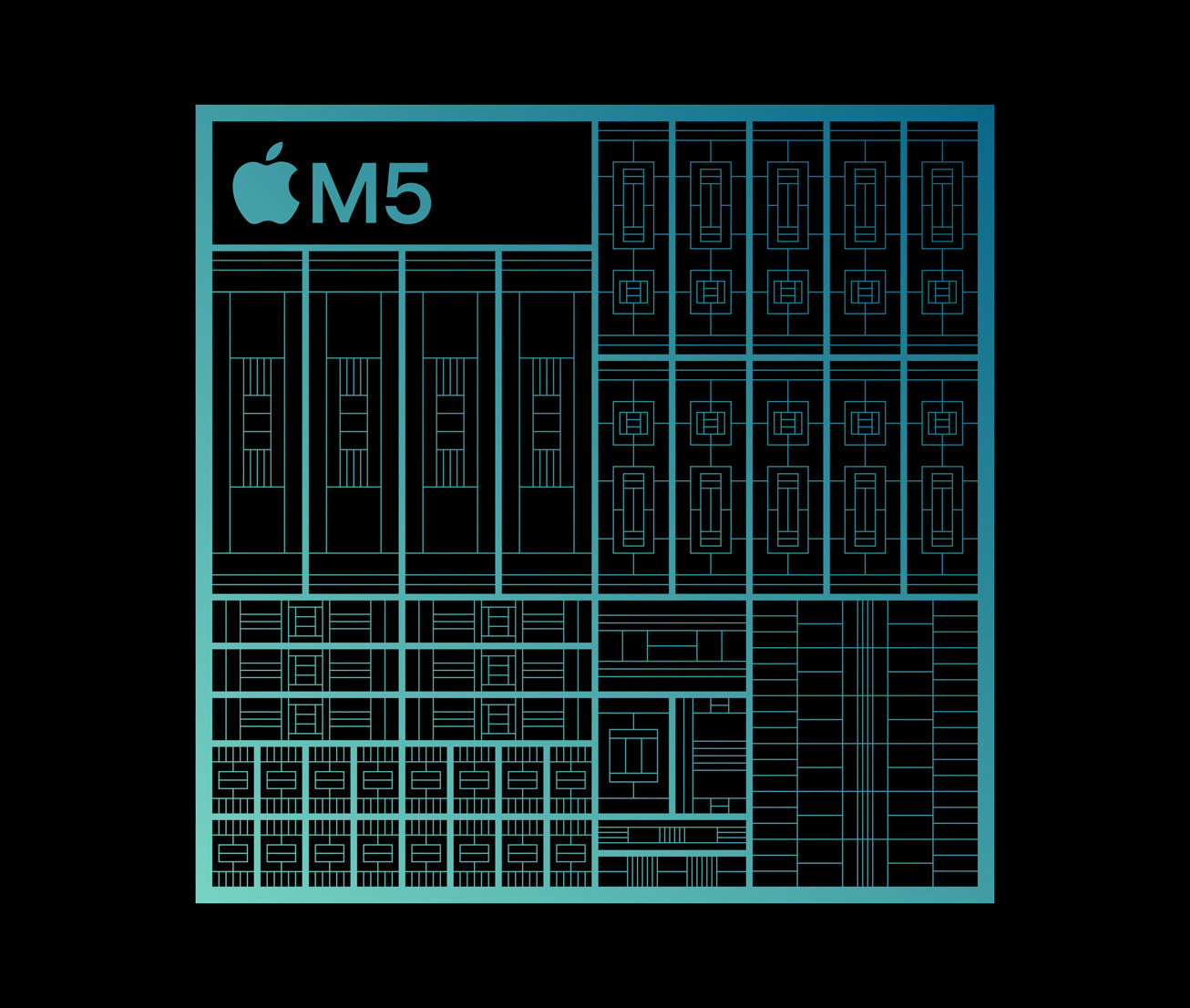With Apple’s M5 chip appearing in more devices, it’s time for an M5 vs. M4 chip smackdown. Apple unveiled its new M5 chip in October, marking a significant leap forward in on-device artificial intelligence performance over its predecessor. So let’s compare the M5 chip to the M4 chip.
While maintaining the same core architecture as the M4 chip, the M5 delivers dramatic improvements in AI processing, graphics capabilities and memory bandwidth that position it as Apple’s most AI-focused silicon to date. But it enough to temp would-be upgraders?
M5 vs. M4 chip: Apple’s latest silicon breakthrough explained
Apple began its journey with M-series Apple silicon chips replacing Intel chips in 2020. Now it has rolled out the powerful new M5 chip in the latest 14-inch MacBook Pro laptop, iPad Pro tablet and Vision Pro headset. What sets it apart from the still-highly capable M4 chip? Read on.
M5 vs. M4 chip specs: Quick comparison
| Feature | M5 | M4 | Improvement |
|---|---|---|---|
| CPU configuration | 10-core (4 performance + 6 efficiency) | 10-core (4 performance + 6 efficiency) | Same |
| Multithreaded performance | Up to 15% faster | Baseline | +15% |
| GPU cores | 10 cores with neural accelerators | 10 cores | Neural accelerators added |
| Peak GPU compute | 4x faster | Baseline | +300% |
| Ray tracing performance | 3rd-gen engine, 45% faster | 2nd-gen engine | +45% |
| Neural engine | 16-core (improved) | 16-core | Enhanced |
| GPU neural accelerators | Yes (dedicated in each GPU core) | No | New feature |
| Unified Memory bandwidth | 153 GB/s | 120 GB/s | +27.5% |
| Manufacturing process | TSMC 3rd-gen 3nm | TSMC 2nd-gen 3nm | Upgraded |
| AI – time to first token (LLM) | 3.6x faster | Baseline | +260% |
| AI video enhancement (Topaz) | 1.8x faster | Baseline | +80% |
| AI Speech Enhancement (Premiere Pro) | 2.9x faster | Baseline | +190% |
| Ray-traced rendering (Blender) | 1.7x faster | Baseline | +70% |
| Available in | 14″ MacBook Pro, iPad Pro, Vision Pro (Oct 2025) | iPad Pro (7th gen), 2024 iMac, Mac mini, MacBook Air, MacBook Pro | — |
Key takeaway: On-device AI processing
The M5 represents Apple’s most AI-focused chip to date, with the biggest improvements in on-device AI processing, GPU compute performance, and memory bandwidth — all while maintaining the same core CPU architecture as the M4.
So the most substantial upgrade in the M5 is its processing power for Apple Intelligence. Each of the chip’s 10 GPU cores now includes a dedicated Neural Accelerator, putting more machine learning compute power right where it’s needed. This is in addition to the improved 16-core Neural Engine, dedicated to handling machine learning tasks. All this power is always on-tap, entirely on-device — no cloud processing required.
The performance gains are striking, according to Apple:
- M5 delivers 3.6x faster time to first token in large language models compared to the M4.
- AI-powered video enhancement in Topaz Video is 1.8x faster.
- Speech enhancement using AI in Adobe Premiere Pro sees a 2.9x speed improvement.
- Ray-traced rendering in Blender is 1.7x faster.
Graphics get a major boost

Photo: Apple
Beyond AI, the M5 brings substantial graphics improvements. Apple claims over 4x the peak GPU compute performance compared to the M4, thanks to those Neural Accelerators in every GPU core.
The Neural Accelerators are like little mini Neural Engines. These are specialist cores that boost AI capabilities for graphics and other applications. They allow for faster execution of AI workloads, powering features like Face ID and computational photography.
The chip also features a third-generation ray tracing engine that delivers up to 45% higher graphics performance in 3D applications and games.
Faster memory for demanding workloads
The M5 offers 153GB/s of unified memory bandwidth — a 27.5% increase over the M4’s 120GB/s, the iPhone giant said.
This boost is particularly beneficial for creative professionals working on large projects and AI workloads, allowing data to move more quickly across the chip without relying on cloud processing.
What stays the same, or nearly so
The M5 retains the 10-core CPU configuration of its predecessor: four performance cores and six efficiency cores. Apple continues to claim its performance cores are the “world’s fastest,” with the M5 delivering up to 15% faster multithreaded performance than the M4.
The chip is built on TSMC’s third-generation 3nm process, an upgrade from the M4’s second-generation 3nm manufacturing.
M5 vs. M4 chip: Availability
The M5 chip powers the latest 14-inch MacBook Pro, iPad Pro and Vision Pro, all available for preorder with shipping October 22. The new MacBook Pro with M5 also introduces a 4TB storage option, doubling the previous 2TB maximum.
You can find the M4 chip family in Apple’s previous iPad Pro (7th generation), 2024 iMac, 2024 Mac mini and 2024 MacBook Air and MacBook Pro models.
Conclusion
The M5 chip represents Apple’s most AI-focused chip to date, with the biggest improvements in on-device AI processing, GPU compute performance and memory bandwidth — all while maintaining the same core CPU architecture as the M4. While the M4 chip is still great and a worthy value to get in older, less-expensive devices, M5-equipped devices are the best for performance. Read more about the M5 chip.
This post first published on October 16, 2025, and republished with updates on November 17, 2025.
![M5 vs. M4: Apple’s latest silicon breakthrough explained [Updated] M5 vs M4 chip comparison](https://www.cultofmac.com/wp-content/uploads/2025/10/M5-vs-M4-chip-1-1020x574.jpg)

